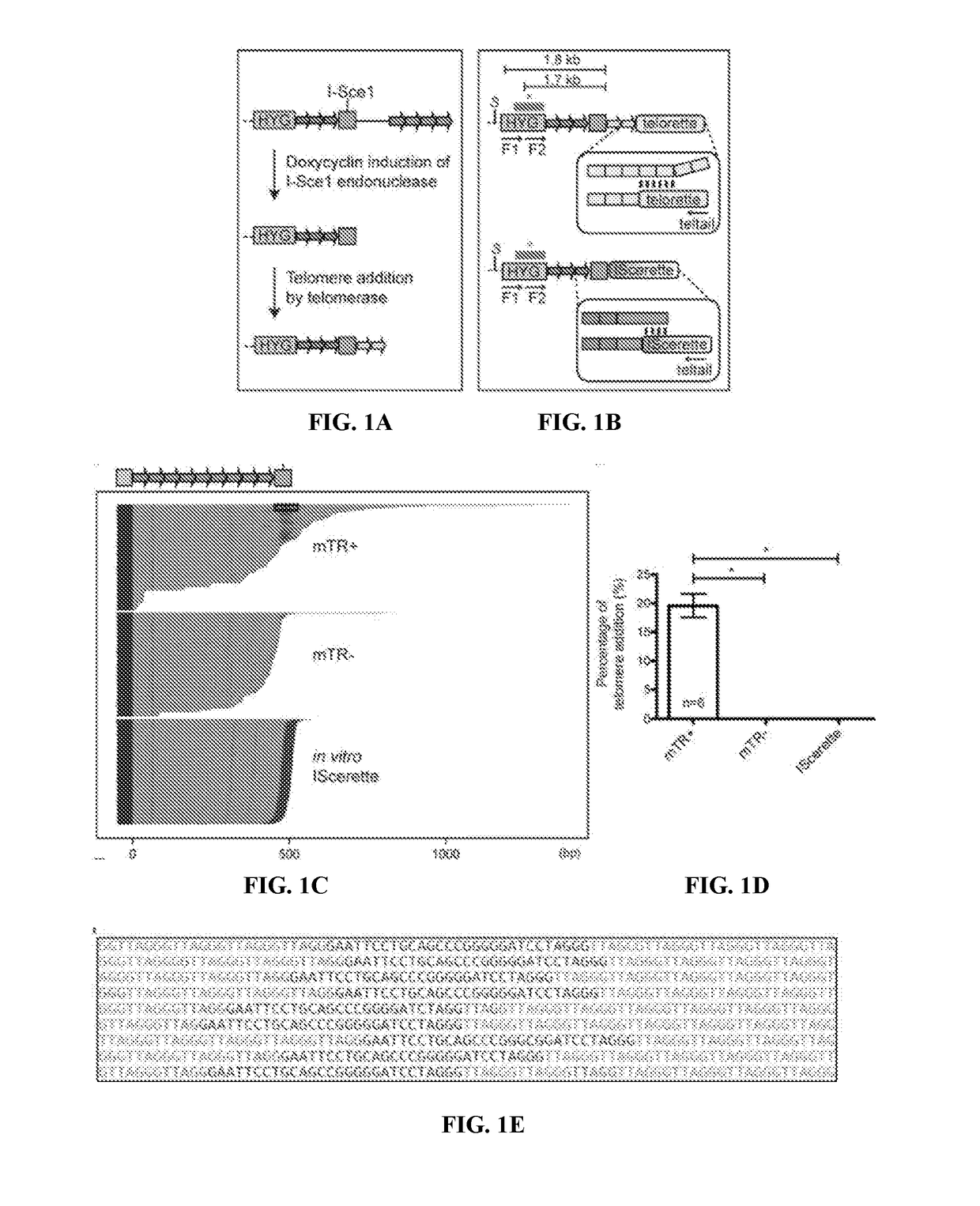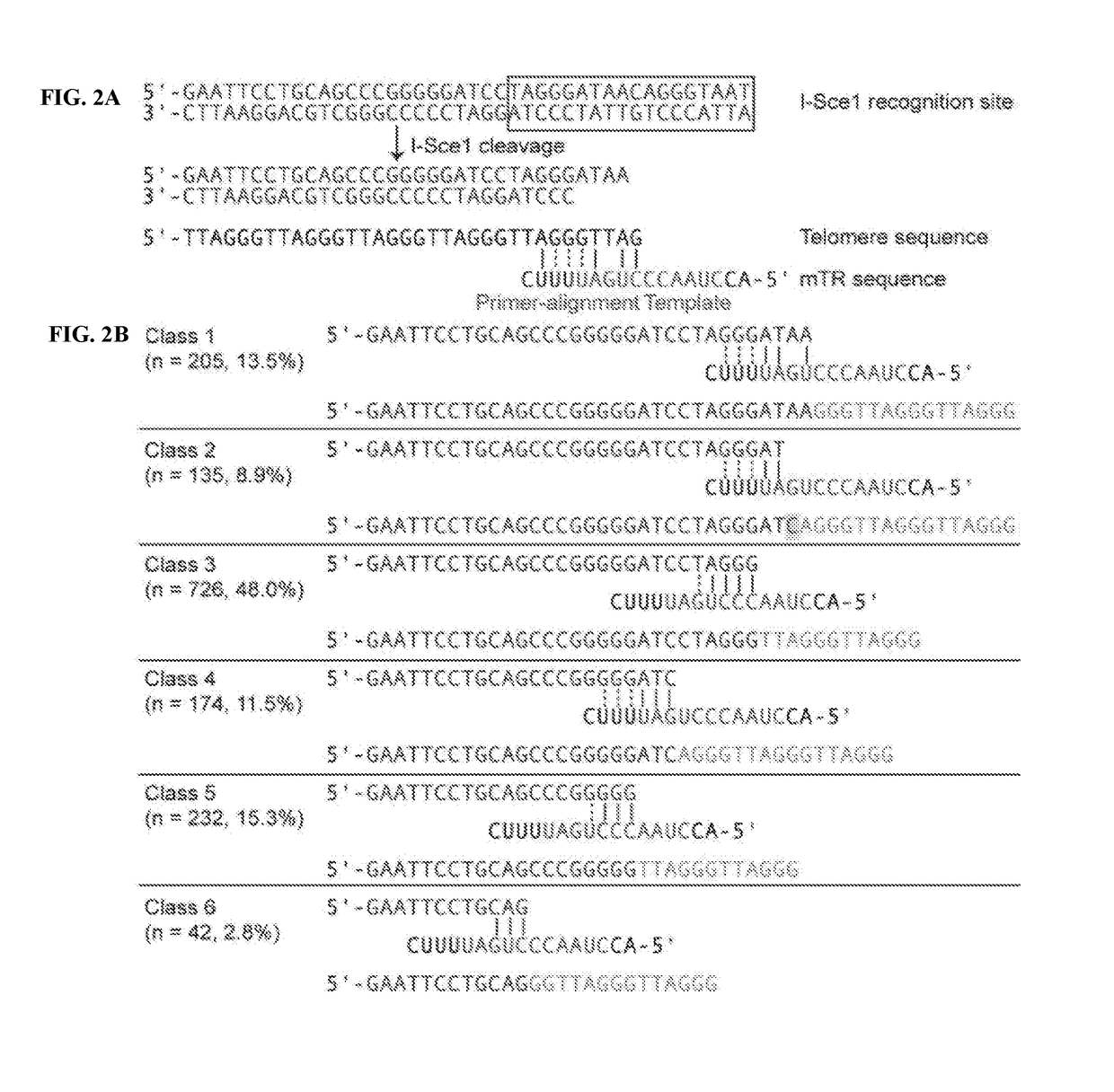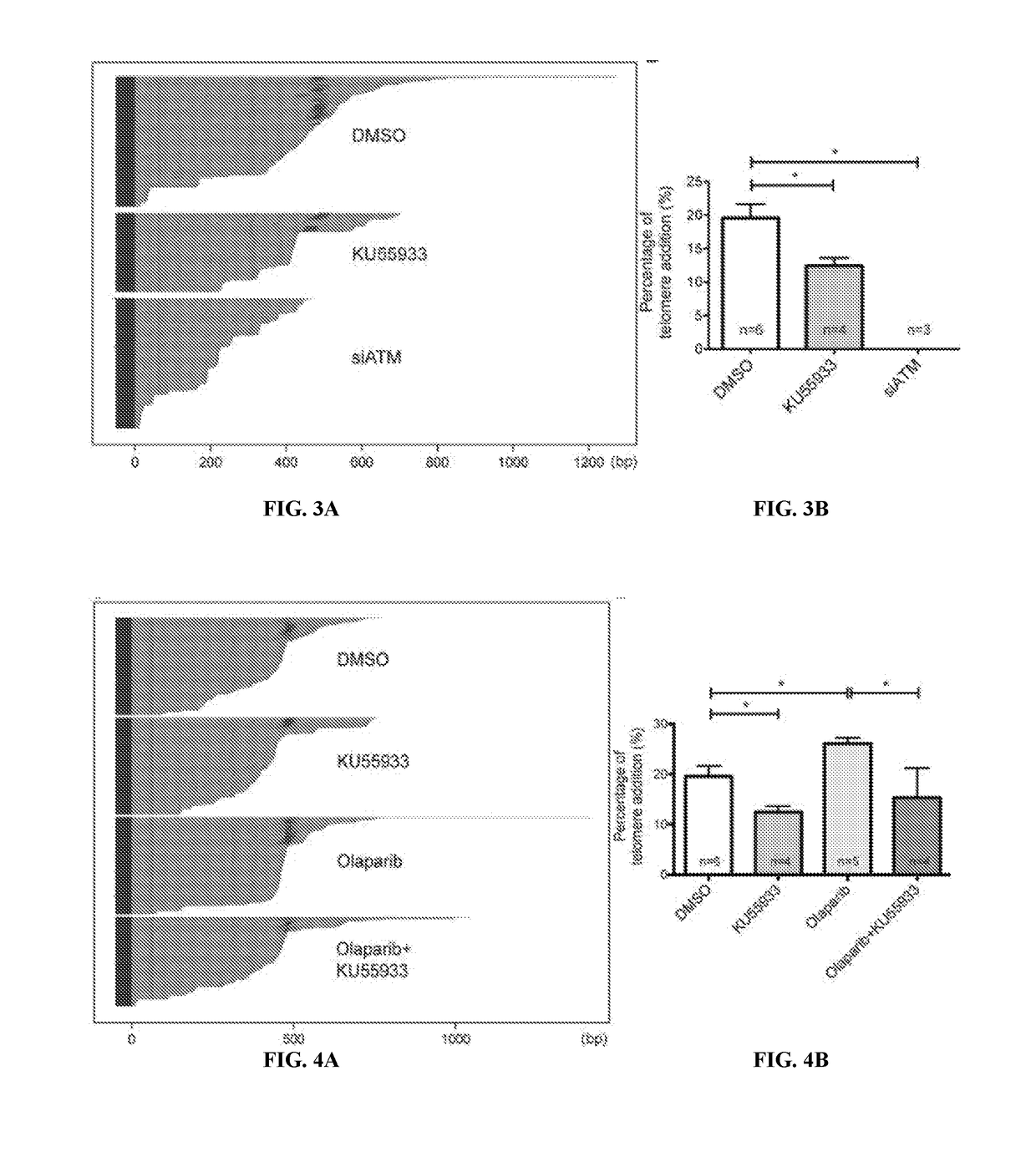Method for regulation of telomere length
a technology of telomerase and telomere elongation, which is applied in the direction of transferases, instruments, extracellular fluid disorders, etc., can solve the problems of age-related degenerative diseases that are often fatal, tumors lacking telomerase are not able to continue to grow indefinitely, and the activity of telomerase is difficult to detect in normal somatic human tissues, so as to achieve the effect of increasing telomere elongation
- Summary
- Abstract
- Description
- Claims
- Application Information
AI Technical Summary
Benefits of technology
Problems solved by technology
Method used
Image
Examples
example 1
Addition of De Novo Initiated Telomeres Assay (ADDIT Assay) to Identify Telomere Length Regulators
[0093]To critically access the role of ATM, as well as other potential telomere length regulators, an assay was developed that measures telomere repeat addition in cells, referred to herein as the addition of de novo initiated telomeres assay, or ADDIT assay. Using the ADDIT assay, it was determined that that ATM is required for addition of new repeats onto telomeres in mouse cells. Evaluation of bulk telomeres, in both human and mouse cells, showed that blocking ATM inhibited telomere elongation. Finally, the activation of ATM through the inhibition of PARP1 resulted in increased telomere elongation, supporting the central role of the ATM pathway in regulating telomere addition. Understanding this role of ATM may yield new areas for possible therapeutic intervention in telomere-mediated disease.
[0094]Results
[0095]Addition of De Novo Initiated Telomeres—ADDIT Assay
[0096]To critically ac...
example 2
Role of Cyclin-Dependent Kinases in Telomere Length Regulation
[0169]Telomeres are specialized structures at the ends of the linear chromosome that allow cells to distinguish the natural ends from double-strand DNA break. Failure to maintain telomere structure can result in chromosome fusions and genomic instability. Telomere structure, and the enzyme telomerase that is responsible for synthesizing telomeric repeats, are highly conserved. Telomere DNA consists of a short tandem repeats of a short G-rich sequence with a stretch of 3′ overhang. This G-rich 3′ overhang structure of telomeres is conserved throughout eukaryotes, including ciliates, fungi and mammals. The proteins that interact with the 3′ single-strand overhang and those that bind the double-strand telomeric repeats have important roles in maintaining telomere lengths as they are involved in protecting telomere ends and modulating telomerase access to telomeres.
[0170]Most of the key players and requirements for telomere l...
PUM
| Property | Measurement | Unit |
|---|---|---|
| concentration | aaaaa | aaaaa |
| body weight | aaaaa | aaaaa |
| concentration | aaaaa | aaaaa |
Abstract
Description
Claims
Application Information
 Login to View More
Login to View More - R&D
- Intellectual Property
- Life Sciences
- Materials
- Tech Scout
- Unparalleled Data Quality
- Higher Quality Content
- 60% Fewer Hallucinations
Browse by: Latest US Patents, China's latest patents, Technical Efficacy Thesaurus, Application Domain, Technology Topic, Popular Technical Reports.
© 2025 PatSnap. All rights reserved.Legal|Privacy policy|Modern Slavery Act Transparency Statement|Sitemap|About US| Contact US: help@patsnap.com



